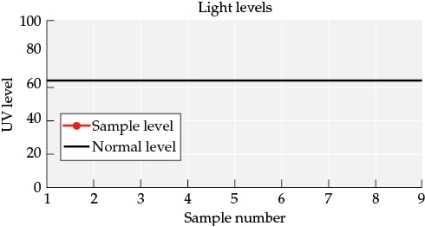Essay
Refer to the figures.
Figure 5
 Figure 6
Figure 6
 Figure 7
Figure 7
 You are studying the impacts of a volcanic eruption that produces a lava flow that covers part of a grassland (Figure 5). You begin taking samples as soon as the area is safe to work in-about one year after the main eruption has ended. You set up a transect (beginning at "Transect start" in Figure 5), and then collect data on how several abiotic and biotic factors vary across it (Figures 6 and 7).
You are studying the impacts of a volcanic eruption that produces a lava flow that covers part of a grassland (Figure 5). You begin taking samples as soon as the area is safe to work in-about one year after the main eruption has ended. You set up a transect (beginning at "Transect start" in Figure 5), and then collect data on how several abiotic and biotic factors vary across it (Figures 6 and 7).
-As part of your long-term research, you look into the succession patterns along the transect. Would a space for time substitution allow you to predict succession patterns in the lava flow area based on succession you observe in the blast zone? Why or why not? How is this situation similar or different from other situations that use space for time substitutions?
Correct Answer:

Verified
Space for time substitution cannot be us...View Answer
Unlock this answer now
Get Access to more Verified Answers free of charge
Correct Answer:
Verified
View Answer
Unlock this answer now
Get Access to more Verified Answers free of charge
Q21: Refer to the figures.<br>Figure 1<br> <img src="https://d2lvgg3v3hfg70.cloudfront.net/TBO1115/.jpg"
Q22: The tolerance and the inhibition models of
Q23: Which statement about Bertness and Shumway's studies
Q24: The inability of a system to shift
Q25: Which statement best summarizes Elton's views on
Q27: A region that is experiencing very frequent
Q28: In the succession that followed the eruption
Q29: Farrell's studies of intertidal communities along the
Q30: Refer to the figure.<br><img src="https://d2lvgg3v3hfg70.cloudfront.net/TBO1115/.jpg" alt="Refer to
Q31: Which type of succession involves colonization of